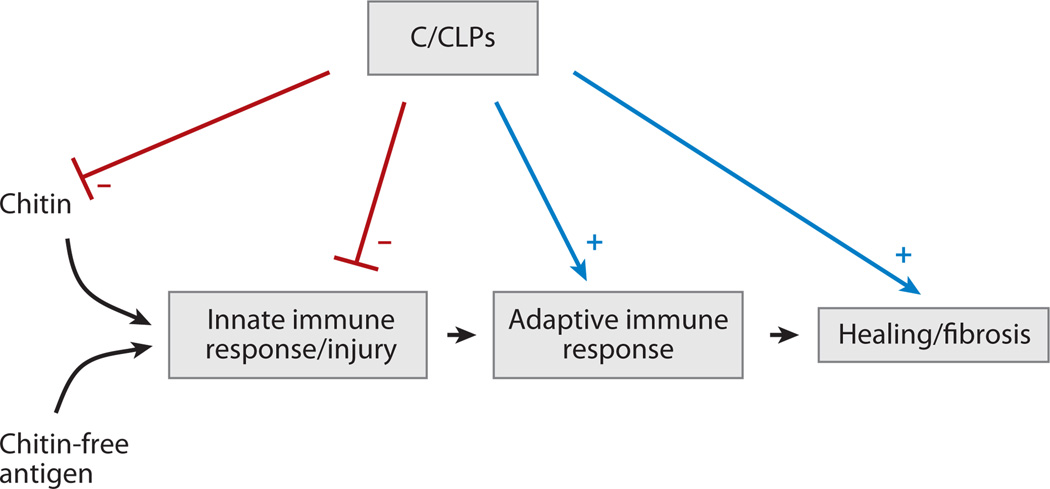Figure 1.
Immune and regulatory effects of chitin, chitinases (C), and chitinase-like proteins (CLP). Chitin is a potent stimulator of innate immune responses and subsequent tissue injury. Chitin-free antigens are also able to induce the innate reactions that, in turn, lead to adaptive immune responses. When appropriately managed, these responses lead to tissue healing. When excessive injury or repair occurs, tissue fibrosis can ensue. C/CLP can inhibit (−) chitin-induced innate immune and injury responses. The ability of AMCase to directly degrade chitin via its chitinase activity and to inhibit epithelial cell apoptosis via a chitinolytic-independent mechanism and the ability of BRP-39/YKL-40 to inhibit oxidant-induced injury are examples of this regulation. Simultaneously, C/CLP-like acidic mammalian chitinase (AMCase) and BRP-39/YKL-40 enhance adaptive immune responses to chitin-free moieties, thereby ensuring the development of selective antigen-specific immunity. This has been studied most intensively with BRP-39/YKL-40, which enhance antigen sensitization, augment the survival of inflammatory cells, and induce alternative (M2) macrophage differentiation. C/CLP are further induced during the type 2 immune response, and their ability to inhibit structural cell apoptosis, to induce macrophage differentiation, and to aid in the production of TGF-β1 may also contribute to healing and fibrosis.

